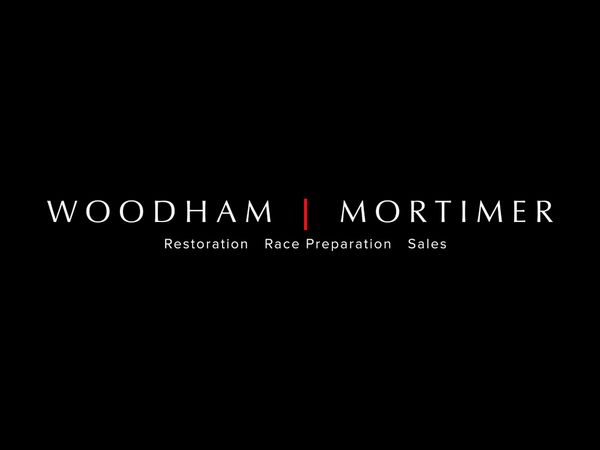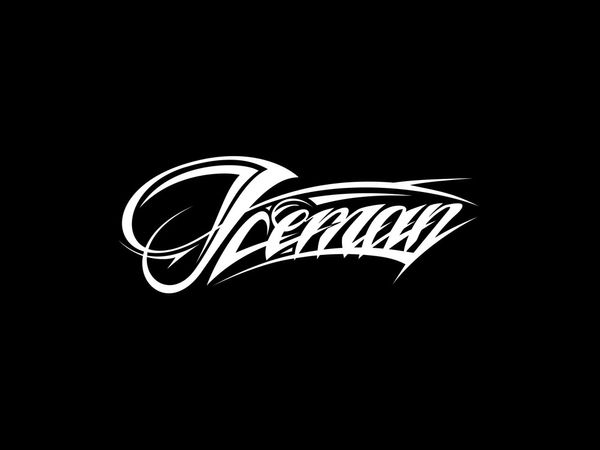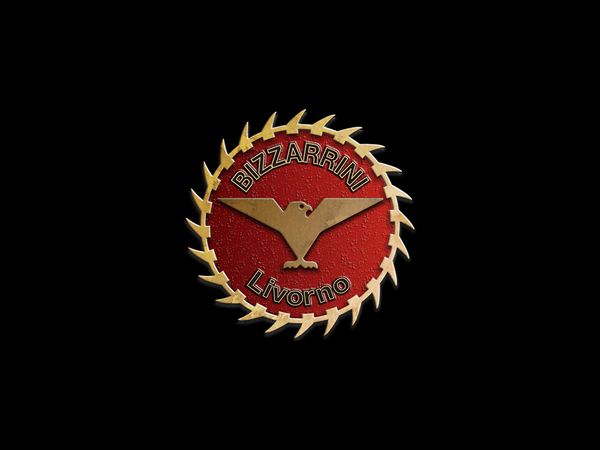THE JOHN ATZBACH COLLECTION
Engine 289 CI
Trans 4-Speed
Color Wimbledon White
Interior Black
The Ken Miles R-Model
The Flying Mustang
The first Shelby R-Model competition car built
The first Shelby Mustang to win a race
The most historically significant Shelby Mustang in the world
Shelby American Factory team car and engineering test mule
Driven extensively by Ken Miles, Bob Bondurant, Chuck Cantwell, Peter Brock and Jerry Titus
More than 10 First Place finishes in B-Production during the 1965 SCCA season
Jerry Titus won the 1965 B-Production National Championship driving 5R001 as a result of the points he earned driving 5R002 earlier in the 1965 season
This car was used to develop and implement the new and improved designs, ideas and components on Shelby's second R-Model team car (5R001) and the 34 customer R-Models
The only R-Model built in this configuration with numerous design attributes that are unique to 5R002
Factory demonstrator used to show potential clients the capabilities of an R-Model
Featured on the cover of Sports Car Graphic in March 1965 and Road & Track in May 1965
Featured in countless books and periodicals over the years
Professionally restored to its original Green Valley 1965 racing debut livery by world-renowned marque-specialist John Brown of Thoroughbred Restorations in Oklahoma City, OK
Amelia Island Best in Class award 2014
Achieved a 947/950 score in SAAC Division I concours judging
Pebble Beach Concours d'Elegance 2015 Best in Class award and winner of the highly coveted Road & Track magazine sponsored “Car We Would Most Like to Drive” Award
Recognized as the “Flying Mustang,” the first Shelby GT350 “R-Model” ranks not only as the most historically important Shelby Mustang in the world, but it is also arguably the most important Mustang in the history of the marque, period.
It was Shelby’s answer to Ford’s desire to create a high-performance image for the Mustang, and it would transform the public’s perception of the Mustang as a “secretary’s car.” In typical Shelby fashion, the creator of the all-conquering Cobra produced a machine designed not only to qualify for SCCA Production Sports Car competition, but also to thoroughly dominate it. In doing so, Shelby and his crew created a blueprint for Mustang performance, which is followed to this day by Mustang enthusiasts around the world.
The first competition Shelby Mustang, the first to be raced and the first to win, 5R002 simultaneously served as Shelby American’s factory engineering mule, a rolling test bed for ideas and components, including those that would constitute both the second team car (5R001) and all 34 customer R-models. It was presented to the FIA for homologation for SCCA B Production class racing in 1965 and was illustrated in the official homologation papers. Ken Miles, Bob Bondurant, Chuck Cantwell, Peter Brock, Jerry Titus and several other world-class drivers drove it extensively in testing and development. In the film “$1,000,000 Mustang,” Carroll Shelby states that “Ken Miles and Chuck Cantwell drove 50,000 miles in the test mule Mustang” (5R002). When asked about this quote, Chuck Cantwell replied, “I wonder which month of testing Carroll was referring to? I’m sure we put a LOT more than 50,000 miles on that car.” Simultaneously, 5R002 also served as a demonstrator, being used to convince prospective R-Model buyers of the car’s tremendous potential. Physically, 5R002 is completely unique; the only car built to its specific configuration, it features numerous parts and design attributes not found on any of the R-models that followed it.
Upon its completion, 5R002 commenced its promotional duties on January 27, 1965, at California’s Riverside International Raceway for the GT350’s formal press introduction. Journalists were invited to drive street models, while Ronnie Bucknam gave demonstration rides in 5R002, inspiring the superlatives peppering the rave reviews that followed. Sports Car Graphic was the first out of the gate with an illustrated feature article on the GT350 written by Jerry Titus, who had driven 5R002 with Ken Miles at the Riverside press event. As a result of that drive, Titus would soon go on to sign with Shelby American as a team driver, spending most of the 1965 season piloting this exact car.
In the meantime, 5R002 made its racing debut on a brisk but sunny Valentine’s Day (February 14, 1965) at Green Valley Raceway near Dallas, Texas, where it made history as America’s first Mustang in space.
The image leapt from the pages of practically every enthusiast magazine in the country and spread through the motoring world like a stampede: a Wimbledon White Ford Mustang fastback, soaring over a rise at full song and clearing terra firma by a foot, a grinning Ken Miles at the reins. Frozen in mid-flight, the first competition GT350 was on its way to sweeping the B Production races that day, proving to one and all the Mustang’s transformation—in the words of Hot Rod magazine—from a “gentle little colt into a roaring, snorting stallion.”
The marketing campaign that followed built on the media sensation created by the so-called “Flying Mustang” photo, which branded the GT350 as an exciting winner right out of the gate. It was the first win by a GT350—on its first outing—and the first of three straight class wins that day for Miles in his new Mustang racer. A post-race Shelby press release touted the GT350 as “a true dual purpose sports car that is a top performer on and off the track.” Images of the Flying Mustang soon appeared in Shelby marketing materials with the claim, “See, our Mustangs really fly!”
Simply put, the GT350 overwhelmed its competition.
Just two weeks after Miles’ first victories in Texas, Jerry Titus marched 5R002 through four consecutive SCCA B Production class wins on March 3 and 4 at Pomona, California, and March 20 and 21 at Tucson, Arizona, followed on April 18 by a second place at Riverside, class wins on April 24 and 25 at Phoenix, and another on May 30 at Santa Barbara.
That same month, 5R002 appeared on the cover of the May issue of Road & Track, where it posed with GT40 103, the factory competition Cobra CSX2513 and a beaming Carroll Shelby. Inside was a detailed and well-illustrated comparison of street and competition GT350s featuring a street model and 5R002. It was also featured in the movie “Shelby Goes Racing with Ford,” in which it was driven by the legendary Peter Brock at Willow Springs Raceway.
GT350 Project Engineer Chuck Cantwell got into the action in July at Willow Springs, scoring a second in the regional B Production on the 24th and winning the class in the national race the following day. Ed Leslie took the reins two weeks later in a non-championship race at San Francisco’s Candlestick Park, scoring second in BP behind Jerry Titus in 5R001 on August 8.
With 5R001 completed and in the hunt, 5R002 resumed duties as a factory engineering car for further development of the GT350R program, including an arduous 2,000-mile tire test conducted by Goodyear at Daytona. Immediately thereafter, on November 28, it took up racing again at the same venue for the SCCA American Road Race of Champions (ARRC), where it was entered as an alternate to be driven by Chuck Cantwell. Unfortunately for Cantwell, all the qualifiers showed up to race, leaving him sidelined. Jerry Titus in 5R001 won the race and the B Production championship, but since the title was based on driver’s points, the many wins he scored while barnstorming in March through May are credited to 5R002.
On February 12, 1966, 5R002 returned to Green Valley with Jerry Titus. Titus won B Production, finishing 12th overall in the Saturday regional race, but in the Sunday national race he finished second in class behind the speedy Pedro Rodriguez in the Gene Hamon-sponsored GT350R.
According to the factory invoice included in the car’s documentation, on March 31, 1966, Shelby American sold 5R002 for $4,000 as a “test car – as is” to Bill Clawson of Dearborn, Michigan, an engineer in the Ford Performance Division in Dearborn reporting directly to division head Ray Geddes.
Geddes was instrumental in negotiating the sale of 5R002 from Shelby American to Clawson, convincing Ford to pay part of the purchase price, as well as transport and delivery costs. He also arranged for Ford to secretly provide sponsorship while Clawson raced 5R002, as documented in the numerous receipts and working notes Clawson kept on file and that now accompany the car.
In fact, Clawson kept unusually extensive documentation on this car, as well as his specific correspondence with Shelby American and Ford as it related to this car and to his interest in driving Ford race cars. In addition to their value as historic documentation, these documents are truly fascinating to read. Ultimately, they added information that literally changed the known and published history of 5R002.
One story well illustrates the importance of Clawson’s records to the history of 5R002. After experiencing a couple of engine failures, Clawson asked Geddes if Ford could help him acquire a reliable replacement. Geddes’ answer came quickly: Clawson should go to Ford contractor Kar Kraft in Brighton, Michigan, to pick up a specific engine. Clawson could not believe his luck; the new powerplant was not only a full racing-spec GT40 engine, but it was also a Ford “XE” experimental engine that was never supposed to leave Ford property to ensure that GM could not obtain it. All of the paperwork confirming and detailing this engine is included in Clawson’s files. Both this engine and the files go with the car today.
Clawson ran 5R002 on the SCCA Midwest circuit with sponsorship covertly channeled from Ford through famed Detroit dealer Stark Hickey Ford. On May 7, 1966, starting in 22nd place at Grattan, Michigan, because he was unable to attend the qualifying race, Clawson clawed his way up to finish fourth in BP. On May 22 at Grayling, Michigan, overheating problems held him to third in BP, but he came back to score the class win and second overall at Waterford Hills, Michigan, on May 28 and then second in class and overall on May 29. His son, Scott, also won B Production in that weekend’s Novice race while driving 5R002.
Clawson picked up third in class at Mid-Ohio on June 5 and then returned to Waterford Hills to take the overall win on June 25 and second in class and overall the next day.
Again at Waterford Hills in August, Clawson took the overall and class wins on the 27th and finished second in class and fourth overall on the 28th, and Scott Clawson repeated his earlier BP win in the Novice race. The 1966 season finished on October 9 with overheating problems and a sixth place in B Production at Indianapolis Raceway Park. Bill Clawson qualified for the 1966 SCCA National Championship Runoffs driving 5R002, but was unable to arrange transportation of the car to the event in time to attend.
In 1967, Clawson ran a light schedule, covering Waterford Hills and Grattan, scoring a second in class followed by two B Production wins. In all, Clawson and his son, Scott, entered the car in 25 regional and national races through 1966 and ’67, amassing five first place, four second place, two third place, one fourth place and one sixth place finishes. Scott Clawson entered six of those races, winning two Novice races and two third place finishes in regular BP races—a marvelous combined overall record.
Clawson sold the car in 1968 to Texans Dale Wood and Russell Fish, who dominated the SCCA Southwest Division winning nearly every race with Russell Fish behind the wheel. Fish won B Production 18 times through 1969 at Green Valley, Austin, Conroe Airport, Odessa, Chenault Air Base, San Marcos, San Jacinto and Texas International Speedway, entering 5R002 in 21 races, scoring 18 first place finishes, including 10 overall wins, all on the way to winning the 1969 SCCA Southwest Division B Production Championship.
In 1970, Luis Blanq-Cacaux of Monterrey, Mexico purchased 5R002 for $3,500 and another $350 for the rather rudimentary open-wheel transport trailer that then carried it. Blanq-Cacaux raced the car in the Mexican Trans Am series, scoring three firsts, three seconds and three third place finishes in Monterrey. He also raced in the Mexico 1000 with Gerardo Martinez. He campaigned 5R002 for two years and then parked it after painting it with gray primer while on its trailer in an open shelter in a yard near Monterrey, where it sat until it was discovered by Mark Gillette of Dallas in 1989.
Gillette immediately purchased and returned the car to the U.S., subsequently selling it to his business partner, Rick Nagel, who then sold it to Steve Volk, who displayed 5R002 at the Shelby American Museum in Boulder, Colorado, in “as found” condition. It would be displayed there for 14 years.
In 2010, Volk sold 5R002 to dedicated Shelby collector John Atzbach, who was invited to show the car at the Quail Motorsports Gathering, celebrating 45 years of the Shelby Mustang. Still in as-found condition, it was quite the sight amongst all the beautifully restored cars gracing The Quail’s manicured grounds. That same year in 2010, it was invited and shown at the prestigious Kirkland Concours in Kirkland, Washington, as part of an exceptional display of “Screamers by Shelby”, again still in as-found condition.
Atzbach then commissioned John Brown of Thoroughbred Restorations in Oklahoma City, Oklahoma, to restore the car to its original racing configuration as seen at Green Valley, Texas, in February 1965. This painstaking task took four years and countless contributions by more than three dozen devoted enthusiasts, including many former Shelby personnel who played important roles in this car’s conception, construction and development.
Literally thousands of hours were spent researching the car’s history before the physical restoration was begun. Hundreds of period photos were discovered and collected, along with original film and video of the car racing in its first race at Green Valley, Texas, and in another one of its 1965 races as a factory team car. Countless hours were expended traveling around the U.S. to locate and interview, on video, every possible person who had originally been involved with the car in any way. As a result of that monumental undertaking, 5R002 is extremely well documented with detailed first-hand information from those who were literally responsible for its creation and history.
The restored 5R002 debuted at the 2014 Amelia Island Concours on the occasion of the Mustang’s 50th anniversary. Appropriately, Chuck Cantwell, the original GT350 project engineer who had driven it to one of its first class wins as a Shelby team car, drove it to the podium to receive the Best in Class Award for its division. 5R002 was shown at the National Shelby Convention at Road America in Elkhart Lake, Wisconsin, in 2014. It was judged by the National SAAC judges and received a 947/950 score in SAAC Division I judging with only 3 total points deducted.
In 2014, it was invited for display at a special show of “Important Ford Prototypes” that was held in Dearborn at Ford Headquarters, where it was showcased alongside the other Mustang prototypes that Ford considers to be the most important of their prototypes in the world: “Mustang I,” “Mustang II,” “Mustang III,” 1965 Shelby GT350 Serial No. 5S003 (the street car prototype and the first GT350 built), and last but not least, this car—1965 Shelby GT350 Serial No. 5R002, the first competition car. While in Dearborn, 5R002 was invited by the head of Ford marketing and PR to be displayed and photographed with 5S003 on the lawn at Ford World Headquarters. Even today, these are the only cars to have been so honored. 5R002 then toured the country attending judged Concours events and historic Mustang 50th Anniversary exhibitions throughout 2014.
In 2015, 5R002 was invited to another 50th Anniversary celebration, this time for the Shelby GT350 as the Marque of Honor at the Pebble Beach Concours d’Elegance. It not only won Best in Class, but it was also named the winner of Road & Track magazine’s coveted “Car We Would Most Like to Drive” Award, a rare honor given to just one entrant each year. That same weekend, 5R002 was driven around Laguna Seca and filmed and photographed extensively for a Rolex marketing campaign, subsequently appearing in both film and printed advertisements for Rolex watches. That same year, Ford borrowed 5R002 and displayed it at several venues to promote the new 50th Anniversary 2015 GT350 R-models. This included showcasing it with the 1967 Le Mans-winning GT40 Mk IV at the January 2016 North American International Auto Show in a special display that honored two of the greatest creations of the historically successful Ford-Shelby partnership.
As the first GT350 competition prototype and the first of two Shelby factory team R-Models, there is little doubt that this car’s instant and wildly popular racing success is almost entirely responsible for changing the public’s perception of the Mustang as a mild-mannered “secretary’s car” to that of a genuine and distinctly American sports car.
Consider this: had 5R002 never been built and had the GT350 concept never been realized and proven so successful right out of the box, there is every chance that the Mustang itself might have gone the way of the Falcon and disappeared altogether.
Instead, thanks to 5R002’s immediate success, the initial enthusiasm for Ford’s revolutionary “Pony Car” grew unabated as Shelby’s GT350 continued its dominance at the track, spawning a movement that has grown from Mustang’s 1964 introduction into an enthusiasm for Ford’s pony car that spans the globe still today. The GT350 was succeeded by more generations of performance Mustangs that are themselves judged as classics, including a whole new and worthy generation of Mustangs bearing that famous moniker. It can be easily argued that none of that would have happened had this specific car not been built, nor been so successful from that first late winter day in the skies above Green Valley, Texas.
On Offer At
Mecum INDY 2020 Auction July 10-18




























